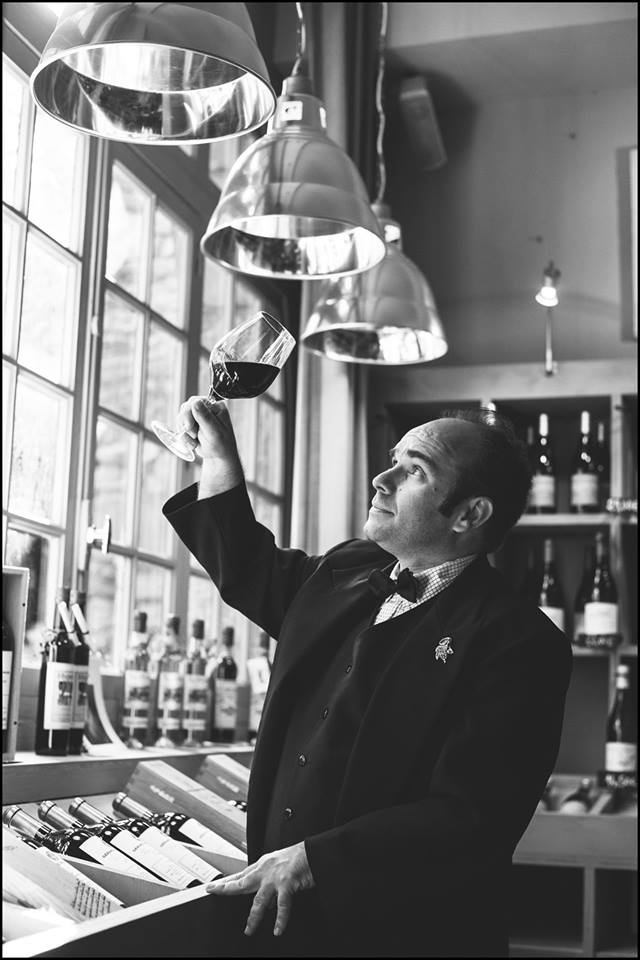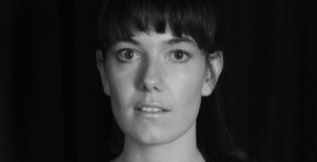by Anthony Wing
Being the second part, following the first part of the confessional memory of a six-week gazebo project…
 High weekday noon along a secondary Eigensinn road, a benign Appian Way hedged with scores of wine bottles, contents long consumed by the sated and departed; discarded glass reflected the late-spring sun in bouncing planes and angles, each step a lightshow dance number, mind-mulch for a traveler en route to the quad close to the midpoint of the property.
High weekday noon along a secondary Eigensinn road, a benign Appian Way hedged with scores of wine bottles, contents long consumed by the sated and departed; discarded glass reflected the late-spring sun in bouncing planes and angles, each step a lightshow dance number, mind-mulch for a traveler en route to the quad close to the midpoint of the property.
The Quad. Taking the long view of a creative act was only two left turns from the Eigensinn entry drag; on arrival, through all due residue of design and luck of the drawbridge, one was suddenly placed in a real-time field of studio canvas. A huge teepee had been up for a while, and other curious installations (including a hobbit-house near which Stadtlander had served a multicourse midwinter dinner) were close by. The project location already marked and measured, we dug holes to fit beams on the first day, an overcast Thursday coursed with pre-quarry mineral air. Earlier that morning Stadtlander had arrived in a pickup truck with a chainsaw for the task ahead, held it aloft and shouted what was to be his starter mantra in the coming weeks:
“WE ARE BUILDING A WORLD WITHOUT IKEA!”
 Not quite a world, just one of ours. In this case the cosmological bivalve innovation took the form of a five-beam structure and miniskirt roof. Our studied sluggish plan coalesced into 3 days a week at the farm and four days of cityside prep. Oyster Boy retrieved discarded shells from restaurant service (a practice that continues today at OB, Union and elsewhere) and I spent days in the OB storage garage drilling holes, breaking the duty to walk up Ossington for replacement drill bits. Reflecting on the theory and practice of oyster gazebo engineering this year, OB felt the drilling unnecessary. “We could have just hammered them on-site.” I disagreed, as much from a wistful ritual pull as against considerations of efficiency; apart from making things quicker at the source, I’d got used to the drilling in the way one gets attached to a non-threatening memory. Like queuing up for a flu shot or removing socked feet from Daoust skates, waving an electric drill over an oyster shell before 9 am sticks with me to this writing. Useful vibration.
Not quite a world, just one of ours. In this case the cosmological bivalve innovation took the form of a five-beam structure and miniskirt roof. Our studied sluggish plan coalesced into 3 days a week at the farm and four days of cityside prep. Oyster Boy retrieved discarded shells from restaurant service (a practice that continues today at OB, Union and elsewhere) and I spent days in the OB storage garage drilling holes, breaking the duty to walk up Ossington for replacement drill bits. Reflecting on the theory and practice of oyster gazebo engineering this year, OB felt the drilling unnecessary. “We could have just hammered them on-site.” I disagreed, as much from a wistful ritual pull as against considerations of efficiency; apart from making things quicker at the source, I’d got used to the drilling in the way one gets attached to a non-threatening memory. Like queuing up for a flu shot or removing socked feet from Daoust skates, waving an electric drill over an oyster shell before 9 am sticks with me to this writing. Useful vibration.
In the evenings Stadtlander would cook large and simple fare for a communal dinner with apprentices and friends, bowls passed round a harvest table in the dining room. We were often joined by neighbours, artists and friends, usually surprise guests who’d dropped by that day for a visit only to be conscripted unwittingly into gathering and hammering oyster shells. One night Stadtlander told us we’d better have a name chosen soon if we wanted to take the thing seriously. I felt ready for this as I had already been making a list, so I proffered the suggestion right away:
“The Oyster Parthenon.”
Murmurs and pause. “He looked round the table and said “Well, I was thinking…” and I knew it was over. The name he would utter in a moment was already acclaimed, the proper convention process subverted, Ignatieff style. Such personalities of idea and force have a certain way of gesturing with cutlery, and it also helped hat my name sucked. Ka-POW, and then
“….we should call it the Oyster Temple of Love.”
OB2, a polymath art dealer given to bursts of polemical discursion on classic literature and statecraft at all-night oyster cabin sessions, was at the table with us that night and rapped the table in approval. And so it was and is. The Temple of Love. As with anything living or in situ, our relationship with it would not be the same the next morning or tomorrow and tomorrow. More beauty had intervened for the better.
During another mid-project dinner, an upcoming wedding anniversary was announced. I left the table to fetch my sleddog-eared Complete Shakespeare and read Sonnet 116 to the assembled. Stadtlander listened intently and announced he had a Shakespeare book in the house I may wish to check out. The author lived nearby and had given it to him as a gift. Dismay met elation in chaotic dischord as I picked it up and found a fictional work of Shakespearean creationism, conceived in the tawdry and antiliterate snobbery of the Oxfordian Theory (the school of alleged thought claiming one Earl of Oxford to be the true author of the Shakespeare’s plays which, by way of science fiction, fantasy and Lancelot Link intrigue, leaves a skein graft of murk and mud on the canon of the greatest known writer in the language). Stadtlander had accepted the book graciously and was happy to pass it along, but he never let on whether he had read it; later that night, after trying to navigate the 8th-grade grammatical speedbumps and hilariously bizarre attempts at demotic Shakespearean (or Oxfordian?) “language”, I felt certain he hadn’t, and the matter was closed.
But the night had an effect by morning, when I emerged from the oyster cabin for the day’s work and felt blocked as I moved towards the gazebo site — blocked onstage by an unseen dramaturgical hand and put through the paces of a Caliban, suddenly sodden with Stephano and Trinculo and lying in wait for the island magus. Like a morganatic gift of the gab dropped into the lap of the fray, it was not so bad a wave of identification with characters from the farewell play. But Eigensinn’s Prospero was just as quick to throw us off the track at any moment during the project, hulking and mercurial as he moved in and out of the frame. For the first few weeks Stadtlander worked with us through the day, but when an evening service was planned he would retreat to the house to check on his apprentice team. Returning in midafternoon when satisfied that dinner prep was in full stretch, he would reappear in the distance, about 100 metres across the clearing, moving left off the winebottle road towards us.
On one such occasion I was atop the gazebo roof pressing oyster shells into wet cement when he turned the corner in his chef whites, slow and languid in the 3 pm June sun. “Ten feet tall,” I said to OB as a sort of heads-up (much the way commis in Calgary, catching sight of a huge toque, would hiss “Land Shark!” as Michael Noble approached), but the sight was a moving amalgam of triggers: a giant thinking about food on a reflective walk through his own Todtnauberg , a locavore chimera escaped from Café Brobdingnag, all with a hint of swagger reminiscent of one of cinema’s greatest scenes without dialogue. The real thing and Stadtlander did not seem far apart that day, helped along by sunlit whites and open spaces.
I don’t recall when the Temple was completed, likely because I wasn’t there at the bitter end when all remaining shells were cleared as August colours began to fade. I recall spaces between: providing lunchtime Liszt and Mozart for the guests and giving piano lessons to one of Stadtlander’s sons; jumping from an old wood-fired shed sauna into the trout pond on another balmy afternoon away from hammers and shells; the wildly bleating sheep rushing to greet the tall man with the feed bag in the mornings; the human power plant Nobuyo Stadtlander playfully chasing us out of the house after yet another night of goofy behavior; the documentary crew who inspired us in the early going; and of course the night of the sole restaurant dinner we attended when Stadtlander, taking clear aim at our table, served a Maritime oyster with sake and hyssop that sent my shellfish culinary trajectory into healthy and ambitious disarray.
Nearly a decade after the Temple went up more installations have followed, and in August there will be the Singhampton Project, a installation collaboration between the Stadtlanders and a French conceptual artist, Jean-Paul Ganem, on whose brochures the Temple features prominently.
Leaving the farm and the protean Leverkuhn ‘n’ Zeitblom comedy duo of Stadtlander and OB for what would be several years away, I stopped by the house and found Stadtlander moving around the kitchen, a little grumpy, getting together breakfast alone. “I hate cooking for myself.” He sat down with a plate and paused, looking away in thought. But we knew that, for him, there was already a way around the problem.
 Anthony Wing is a writer, oyster celebrant, pianist, composer-arranger and Shakespearean anti-fascist. He can often be found, in the company of oysters, on the back patio at Union, 72 Ossington Avenue, Toronto, Ontario, Canada.
Anthony Wing is a writer, oyster celebrant, pianist, composer-arranger and Shakespearean anti-fascist. He can often be found, in the company of oysters, on the back patio at Union, 72 Ossington Avenue, Toronto, Ontario, Canada.








Thanks for the tour-de-force, as usual. Again, Michael and I are not related. They are not a Jewish family. The spelling (mine’s Stattlender, with an “e” and no “d”, although there has been a “g” somewhere along the line, and plenty of “Sh”s and “Sz”s, etc., at the front depending upon the nationality of the local tax collector/recordist’s languages) and the coats of arms are completely different. Nonetheless, as a Canadian, I’m very proud to have him in the ‘family’, as it were. We met years ago when he was in some downtown restaurant -the name of which I do not recall.
So it’s interesting to me when you recall in writing the things I can learn about the goings on of the great chef he has come to be.
All the best,
Mark
Excellent piece, Anthony!
As usual Anthony beautiful and timeless words! Thanks for the mental vacation.
FIERCE, Anthony!